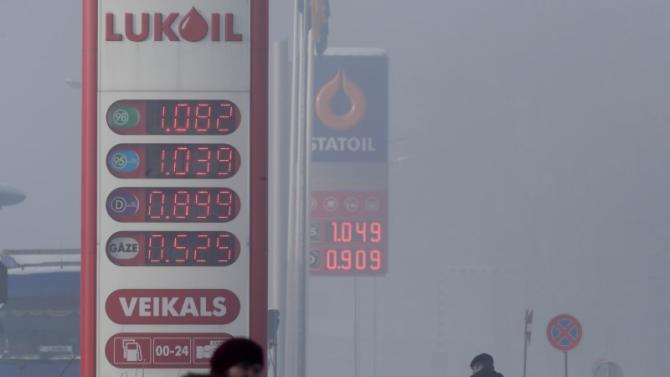Brent futures had risen 21 cents to $37.28 a barrel as of 0627 GMT, after settling 14 cents higher in the previous session. The crude benchmark is set to end the week with a gain of more than 5 percent.
U.S. crude futures had climbed 20 cents to $34.77 a barrel, having settled down 9 cents in the previous session.
While U.S. crude inventories rose to a new record of 517.98 million barrels last week, output fell for a sixth straight week to 9.08 million barrels a day, according to data from the U.S. government's Energy Information Administration.
Cuts in U.S. production are providing price support, but investors are also waiting for key U.S. economic data later on Friday to give further direction, said Ben Le Brun, market analyst at Sydney's OptionsXpress.
"A lot of traders are keeping their powder dry in front of non-farm payroll data - it's the No.1 (indicator) in terms of crude consumers," he said.
"Investors are a little more confident we've seen a bottom in oil (prices)," he added. Le Brun is forecasting oil prices will hover around $40 by the middle of this year.
Positive numbers for both February payrolls and U.S. jobs data, both due at 1330 GMT on Friday, could maintain the momentum of higher oil prices, Le Brun said.
"With the recent strong US economic data, it is very unlikely that non-farm payrolls would underperform. We expect this to give markets more confidence in the U.S. economy," Singapore's Phillip Futures said in a note on Friday.
Rising oil prices this week are helping steer Asian shares towards what will likely be their strongest week in five months, with the MSCI index of Asia-Pacific shares outside Japan on track to climb 5.4 percent for the week.
Japan's Nikkei (.N225) is poised for a weekly gain of 4.7 percent.
Further cuts in U.S. output are possible in the coming months.
"The tight credit market will make it difficult for U.S. shale producers to refinance upcoming debt and we may see an accelerated decline in U.S. oil production in 2016-17," ANZ said in a note on Friday.
The
decline in U.S. production will fuel a 1.5-percent drop in oil supply
by non-members of oil producers' cartel OPEC this year, the first year
of non-OPEC negative supply growth since 2008, Paul Bloxham, chief
Australia economist at HSBC said in a report on Friday.
Non-OPEC
supply is forecast to fall by 850,000 barrels a day this year, of which
760,000 barrels will be cut from U.S. production.
HSBC,
which kept its price forecasts unchanged, assumed an average Brent
price of $45 a barrel this year, rising to $60 in 2017 and $75
thereafter.
(Reporting by Keith Wallis; Editing by Richard Pullin and Biju Dwarakanath)
Culled from Reuters

No comments:
Post a Comment